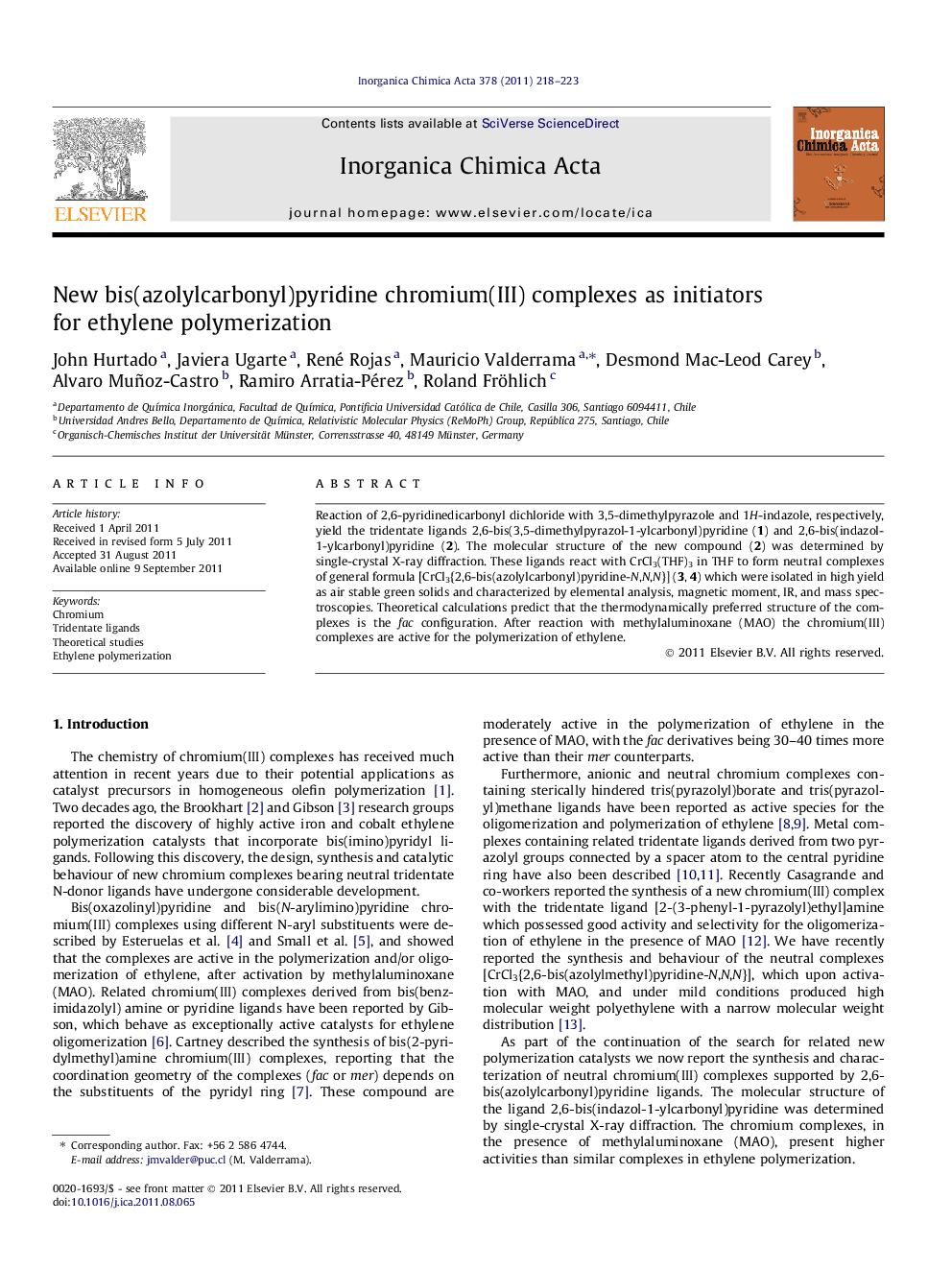| Article ID | Journal | Published Year | Pages | File Type |
|---|---|---|---|---|
| 1307532 | Inorganica Chimica Acta | 2011 | 6 Pages |
Reaction of 2,6-pyridinedicarbonyl dichloride with 3,5-dimethylpyrazole and 1H-indazole, respectively, yield the tridentate ligands 2,6-bis(3,5-dimethylpyrazol-1-ylcarbonyl)pyridine (1) and 2,6-bis(indazol-1-ylcarbonyl)pyridine (2). The molecular structure of the new compound (2) was determined by single-crystal X-ray diffraction. These ligands react with CrCl3(THF)3 in THF to form neutral complexes of general formula [CrCl3{2,6-bis(azolylcarbonyl)pyridine-N,N,N}] (3, 4) which were isolated in high yield as air stable green solids and characterized by elemental analysis, magnetic moment, IR, and mass spectroscopies. Theoretical calculations predict that the thermodynamically preferred structure of the complexes is the fac configuration. After reaction with methylaluminoxane (MAO) the chromium(III) complexes are active for the polymerization of ethylene.
Graphical abstract2,6-Bis(azolylcarbonyl)pyridine ligands are obtained by reaction of 2,6-pyridinedicarbonyl dichloride with 3,5-dimethylpyrazole and 1H-indazole. The molecular structure of 2,6-bis(indazol-2-ylcarbonyl)pyridine was determined by single-crystal X-ray diffraction. These ligands react with the CrCl3(THF)3 complex to form the complexes [CrCl3{2,6-bis(azolylmethyl)pyridine-N,N,N}]. Theoretical calculations show that the thermodynamically preferred structure of the complexes is the fac configuration. After reaction with methylaluminoxane (MAO) the chromium(III) complexes are active in the polymerization of ethylene.Figure optionsDownload full-size imageDownload as PowerPoint slideHighlights► Stable chromium complexes were prepared using bis(azolylcarbonyl)pyridine ligands. ► Theoretical calculations predict that the complexes preferred a fac configuration. ► In the presence of MAO the complexes are active for polymerization of ethylene. ► The presence of a basic functionality in the ligand increases their activity.
